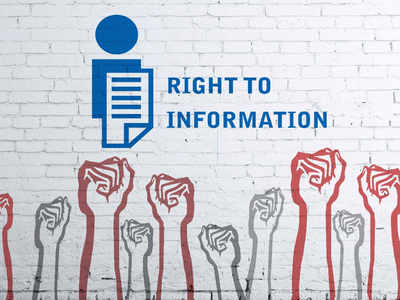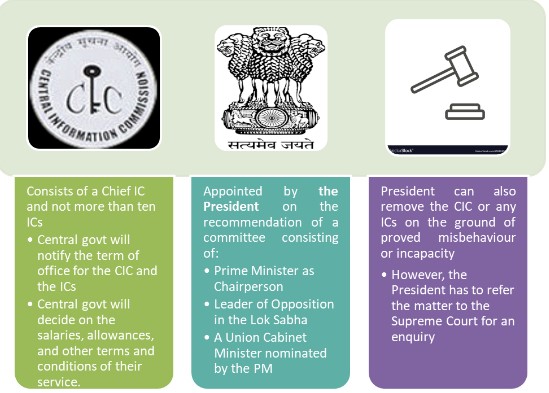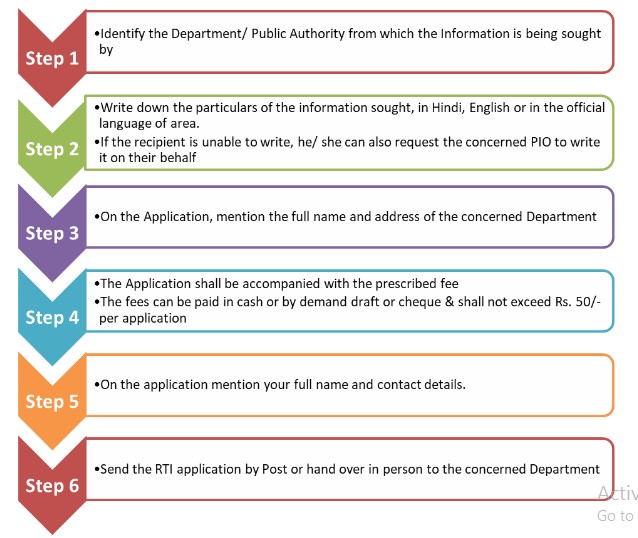Efficacy of RTI Act
2021 SEP 30
Mains >
Governance > Right to Information > RTI ACT

WHY IN NEWS?
- Recent report states that more than 20 RTI activists killed in Bihar over the past decade. Maharashtra followed by Gujarat tops the list for states with the most attacks on RTI users.
BACKGROUND:
- The transformation from mere governance to good governance is possible only if the citizens of the country have right and access to information and participation in the governance.
- It is vital to its functioning, to contain corruption and to hold governments and their instrumentalities accountable.
- However, in the 1980s and 1990s, information regarding the government and governance processes was largely unavailable to the general public.
- This created issues such as corruption, misuse of public funds and inefficiencies in administration.
- Soon, fueled by the efforts of Masdoor Kisan Shakti Sangathan in Rajasthan, RTI movements were initiated across different parts of India.
- As a result of these movements, the Right to Information Act was created in 2005
SALIENT FEATURES OF RIGHT TO INFORMATION ACT, 2005
- Objective:
- To provide a practical regime of right to information for citizens to secure access to information under the control of public authorities, in order to promote transparency and accountability in the working of every public authority.
- Right to information:
- Under the RTI, every citizen is empowered to seek information, ask questions to the government, request for copies of government documents, inspect government documents and works and request for samples of materials of any government work.
- It is applicable to whole of India. Recently, the office to Chief Justice of India was brought under the ambit of the Act.
- Affordability:
- A nominal fee of Rs. 10 has been prescribed for seeking information to check fraudulent applications.
- However, persons below poverty line have been exempted from payment of fees.
- Flexibility:
- Applications for information can be made through various modes, both online and offline.
- Definite timeframe:
- Any citizen of India may request information from a 'Public authority' and such information is required to be provided expeditiously or within thirty days (not later than 48 hours in the matters pertaining to life and liberty of an individual)
- Quasi-Judicial institutions:
- Information Commissions:
- The Act provides for the appointment of Central and State Information Commissioners. They look into the complaints made to it and decide the appeals.
- Central Information Commission:

-
- State Information Commission:
- The RTI Act provides for the creation of not only the Central Information Commission but also a State Information Commission at the state level.
- The Commission consists of a State Chief Information Commissioner and not more than ten State Information Commissioners.
- They are appointed by the Governor on the recommendation of a committee consisting of the Chief Minister as Chairperson, the Leader of Opposition in the Legislative Assembly and a State Cabinet Minister nominated by the Chief Minister.
- They should be persons of eminence in public life with wide knowledge and experience in law, science and technology, social service, management, journalism, mass media or administration and governance.
- They should not be a Member of Parliament or Member of the Legislature of any State or Union Territory.
- They should not hold any other office of profit or connected with any political party or carrying on any business.
- They hold office till the age of 65 or 5 years
- State Chief Information Commissioner or a State Information Commissioner shall be removed from his office only by order of the Governor on the ground of proved misbehaviour or incapacity. However the Governor has to refer the matter to Supreme Court.
- Public Information Officer:
- Every public authority must designate an officer as Public Information Officer, who is responsible for receiving and managing RTI applications. The Act also requires every public authority to computerize their records for wide dissemination.
- Accountability:
- In case of delay, the Central Information Commission or the State Information Commission can impose a penalty. The Commission can also recommend disciplinary proceedings.
- Appeals:
- In case of denial or not providing proper information, the first appeal lies with the First Appellate Authority nominated by the Department while the second appeal lies with the Central Information Commission or State Information Commission.
- Voluntary disclosure:
- Section 4 of the RTI Act mandate for voluntary disclosure of information held by Public Authorities.
- Grounds of Rejection of RTI:
- The organisation is not a ‘public authority’:
- A Cooperative Society, or a Private corporate or Institution, not substantially financed or controlled by the Government.
- Section 24 of the Act:
- Which exempts information related to security and intelligence organisations — except allegations of corruption and human rights violations
- Section 8 of the Act
- It deals with information that are exempted from disclosure. These include information regarding
- National Security, Sovereignty and Economic interest
- Relations with Foreign States
- Judicial Process
- Cabinet and Other Decision-Making Documents
- Trade Secrets and Commercial Confidentiality
- Individual Safety & Personal privacy
- However, even if the requested information is covered by an exemption, the information should still be disclosed to the applicant if the public interest outweighs the harm to protected interests.
RTI (AMENDMENT) ACT, 2019:
|
Provision
|
RTI Act, 2005
|
RTI (Amendment) Act, 2019
|
|
Term
|
The Chief Information Commissioner (CIC) and Information Commissioners (ICs) (at the central and state level) will hold office for a term of five years.
|
Removes this provision and states that the Central government will notify the term of office for the CIC and the ICs.
|
|
Quantum of salary
|
The salary of the CIC and ICs at the central level will be equivalent to the salary paid to the Chief Election Commissioner and Election Commissioners, respectively.
Similarly, the salary of the CIC and ICs at the state level will be equivalent to the salary paid to the Election Commissioners and the Chief Secretary to the state government, respectively.
|
Removes these provisions and states that the salaries, allowances, and other terms and conditions of service of the central and state CIC and ICs will be determined by the central government.
|
|
Deductions in Salary
|
At the time of the appointment of the CIC and ICs (at the central and state level), if they are receiving pension or any other retirement benefits for previous government service, their salaries will be reduced by an amount equal to the pension.
|
The Bill removes these provisions.
|
HOW TO FILE AN RTI APPLICATION:

STATISTICS:
- Public authorities under the Central government received 13.7 lakh RTI requests in 2019-20
- Declining number of rejections:
- As per Central Information Commission’s annual report >> Centre has only rejected 4.3% of all Right to Information (RTI) requests in 2019-20, the lowest ever rate
- Rejection rates have fallen since the 13.9% rate in 2005-06
- Home Ministry had the highest rate of rejections, as it rejected 20% of all RTIs received.
SUCCESSES OF RTI:
- Empowers common man:
- With access to authentic information, people are now more aware and proactive.
- It has helped them question the efficiency and rationality behind public policies and improve upon participatory democracy.
- RTI is being used to redress individual grievances, access entitlements such as ration cards and pensions, investigate government policies and decisions, and expose corruption and misuse of government resources.
- Improved transparency & accountability:
- The Act provides an added layer of scrutiny of public offices. Officials and agencies are now more responsible for their acts.
- Reduction in corruption:
- Transparency and Right to Information has a cleansing effect on the functioning of the government and helps in keeping a check on corruption.
- RTI has emerged as a tool to fight corruption in India. For example, the RTI applications filed by activists Yogacharya Anandji and Simpreet Singh in 2008 exposed the infamous Adarsh Housing society scam
- Better Government-Public relationship:
- The citizen centric approach of the Act provides a framework for promotion of citizen-government partnership in carrying out the programmes for welfare of the people.
- It brings into reality the fact that people are not only the ultimate beneficiaries of development but are the agents of development.
CASE STUDIES:
- Commonwealth Games Scam:
- An RTI filed by a non-profit organization, Housing and Land Rights Network, revealed that the Delhi government had diverted Rs 744 crore from funds earmarked for the welfare of the Dalit community to the Commonwealth Games.
- The non-profit body also found that most of the diverted funds were expended on amenities that existed only on paper, suggesting further corruption and money laundering.
- Jaankari of Bihar
- It is a Bihar government-initiated call centre that accepts RTI applications, first and second appeals over the phone.
- Here RTI can be filed through a phone call.
- Even an illiterate villager can file his RTI application by a call. It also has a helpline where citizens can report, if they have received threats as a result of using this transparency law.
FAILURES OF RTI:
- Misuse and fear of the Act:
- Frivolous and repeated filing of applications is a major reason for the large number of applications.
- It has also given birth to a community of people who are using it as an instrument of extortion and blackmail.
- Due to fear of possible misjudgment, many bureaucrats hesitate in taking decisions, especially in areas of discretionary powers.
- Emphasis on letter of law than spirit of law:
- Government agencies and institutions are increasingly finding ways to decline information sought under the Right to Information Act.
- Also, India’s first transparency audit has revealed only 4% of the surveyed central ministries and departments have been proactively disclosing information to the citizens under section 4 the Right to Information (RTI) Act.
- Constraints faced in filing applications:
- Non-availability of User Guides, lack of standard format for RTI applications and inconvenient channels of application are major constrains in filing a query.
- These have resulted in rejection of applications and need for multiple visits by applicant.
- Institutions outside RTI’s purview:
- Some major institutions are not being covered under the Act. Example: Political parties.
- Low public awareness:
- Between 40 and 60 lakh RTI applications are filed every year, but less than 3 per cent Indian citizens have ever filed an RTI plea.
- Awareness level is low especially among the disadvantaged communities such as women rural population, OBC/SC/ST population.
ISSUES AND CHALLENGES WITH RTI:
- Pendency of cases:
- As many as 13,453 cases have been pending with the Central Information Commission for more than a year.
- The ineffective record management system and vacancies within the offices have further delayed the processing of RTI applications.
- Vacancies and delays in appointments:
- Central and state governments continue to be reluctant when it comes to the timely appointment of commissioners to the Information Commissions, despite explicit directions from the Supreme Court.
- For example: the present CIC has been functioning with six information commissioners and the chief information commissioner while four vacancies still exist.
- Lack of training:
- As per the findings of the survey conducted by DoP&T, only 55% of surveyed PIOs had received RTI training.
- There are no avenues for behavioural training or refresher training of officials. The frequent transfer in PIOs adds to the issue.
- Deficit of basic Infrastructure:
- The Implementation of RTI requires the PIOs to provide information to the applicant through photocopies, soft copies etc.
- Facilities, such as photocopier machines and uninterrupted internet connections are not available at many levels of government.
- Attacks against activists:
- In the last 16 years, at least 86 people who had filed RTI applications have been killed while 175 others have been attacked. At least seven applicants committed suicide while 184 applicants reported being harassed.
- Non-imposition of penalties:
- Data supplied by 20 commissions shows that penalty was imposed in just 2.4% of the cases disposed of.
- Rejection without valid reasons:
- For ex: 40% of RTI rejections 2019-20 did not include any valid reason, as they did not invoke one of the permissible exemption clauses in the RTI Act
- Expansion of Official Secrets Act
- Recently government prohibited retired officials of security and intelligence organisations from publishing anything about their work or organisation without prior clearance from the head of the organisation
- Reluctance in declassifying historical records:
- For ex: Indian Army is reluctant to declassify the Henderson Brooks Report that considered operational failures during the 1962 war with China
WAY FORWARD:
- Reduce pendency:
- The government should take steps to reduce pending appeals.
- For the same, it should fill the vacancies in the information commissions, create a standard record management system for public agencies and provide adequate training for authorities implementing the Act.
- Reduce exemptions:
- The current exemptions are wide and have to be clarified and sharpened.
- More agencies need to be brought under the purview of the act. For instance, bodies like political parties, Central Police Forces and Intelligence agencies.
- But this should be done without diluting the security aspect of these agencies.
- Grand constitutional status:
- The RTI is safeguarding a fundamental right guaranteed under the Constitution and so the government should seriously look into the possibility of elevating the Information Commission to the status of a constitutional authority.
- Ancillary legislations:
- RTI should be supplemented with other legislations that protect activists and officials alike.
- For the same, measures such as protection of whistleblowers and activists, decentralization of power and creation of necessary infrastructures needs to be encouraged.
- Guidelines must be created so that officials cab exercise their powers without fear of being crucified.
- Need an appraisal:
- Every institution needs an appraisal. It has been 16 years since the enactment of the Act. Hence it is high time to initiate studies to identify systemic & institutional level issues and challenges.
RTI AND POLITICAL PARTIES
- Since the inception of the RTI Act, demands have been raised to include political parties under its purview.
- Arguments favouring inclusion:
- Public institutions:
- Except for the political strategy, other matters relating to finance and administration need to be made available to public because political parties are public institutions, receiving money from public.
- Opacity in funding:
- As per the Association for Democratic Reforms (ADR), 2/3rd of political funds come from anonymous sources. This raised concerns about money laundering and crony capitalism.
- Necessary safeguards are in place:
- Section 8 of RTI Act provides for exemptions within it. By including matters such as political strategy under it, this section will safeguard Parties from disclosing critical information.
- Improve internal democracy:
- At present, Parties rarely practice internal scrutiny. Personality cults dominate several parties. Through greater transparency, Parties will be forced to improve their internal democratic setup, such as periodic election of leaders.
- Arguments against inclusion:
- Definition of Public authority:
- Section 2(h) of RTI Act defines public authority as the one which is created by or under the constitution or by the Parliament.
- Political Parties are only recognised under the Act of Parliament i.e. under the Representation of People Act. This is not the same thing as being created by the Parliament. Therefore, statutory limitations need to be addressed.
- Multiple “custodians” of information:
- In case of government offices, a person/position can be designated as PIO.
- However, the same is not possible for political parties as the organizational structure is not uniform for all parties.
- Vindictive Politics:
- Most of the appointments under RTI are still politically backed. Hence, Parties have an apprehension that disclosure of information under RTI act may give advantage to the ruling government.
PRACTICE QUESTION:
Q. Though created as a major step towards good governance, the efficacy of RTI Act is paralyzed by several issues. Discuss.


